| |||||||||||||||||||||||||||||
| |||||||||||||||||||||||||||||
| |||||||||||||||||||||||||||||
| |||||||||||||||||||||||||||||
The Argentine general election of 1928 was held on 1 April, with a turnout of 80.9%.
| |||||||||||||||||||||||||||||
| |||||||||||||||||||||||||||||
| |||||||||||||||||||||||||||||
| |||||||||||||||||||||||||||||
The Argentine general election of 1928 was held on 1 April, with a turnout of 80.9%.

Former President Hipólito Yrigoyen's differences with his successor and erstwhile ally, Marcelo Torcuato de Alvear, persuaded him to campaign for the presidency again. Doing so meant overcoming a host of obstacles, however: his "Antipersonalist" opposition within the UCR, though divided, eroded his allies' majority in Congress from 91 seats (out of 158) to 72 in 1924 and 60 in 1926, [1] and he himself was 78 and in declining health.

Juan Hipólito del Sagrado Corazón de Jesús Yrigoyen was a two-time President of Argentina who served his first term from 1916 to 1922 and his second term from 1928 to 1930.

Máximo Marcelo Torcuato de Alvear Pacheco, better known as Marcelo T. de Alvear was an Argentine politician and President of Argentina October 12, 1922 to October 12, 1928.
These developments encouraged not only the Antipersonalists, but also conservatives, who united behind Julio A. Roca's Rightist Confederation. The Governor of the important Córdoba Province, Roca was the son of General Julio Roca, who had dominated the country politically between 1880 and 1906 and, in the minds of their supporters, recalled a certain nostagia for the pastoral Argentina of the time. President Alvear's Antipersonalist UCR nominated the leader of the 1924 dissension that created the movement, Senator Leopoldo Melo. Melo underscored the conservative bent of his campaign by naming Senator Vicente Gallo as his running mate; Gallo was a founding member of the paramilitary Argentine Patriotic League, and had resigned as President Alvear's Interior Minister after unsuccessfully lobbying to have a pro-Yrigoyen governor removed. [2]
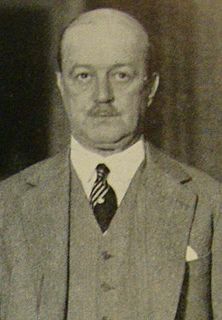
Julio Argentino Pascual Roca Funes was an Argentine politician and diplomat.
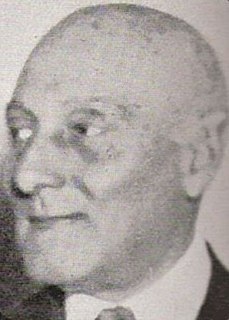
Leopoldo Melo was an Argentine lawyer, diplomat and politician. He was a leading figure in the Radical Civic Union, a nominee for President, and later Minister of Internal Affairs.
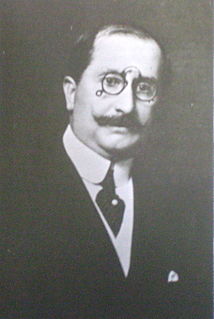
Vicente Gallo was an Argentine lawyer, academic and politician of the Radical Civic Union.
The Socialists, who vied for the majority in the Buenos Aires City Legislature (but had little following elsewhere), themselves balked at the possibility of victory in 1928 and split during their 1927 convention over Senator Juan B. Justo's intransigent leadership of the party. Senator Justo died suddenly in January 1928, and the party presented two tickets: the Authentic Socialists, led by Congressman Mario Bravo and running only in the City of Buenos Aires, and the more conservative Independent Socialists, led Justo's running-mate, former University of La Plata Director José Nicolás Matienzo. [3]

Juan Bautista Justo was an Argentine physician, journalist, politician, and writer. After finishing medical school he joined the Unión Cívica Radical, later participating in the foundation of the Socialist Party in 1896, of which he was chief director until his death. He married Alicia Moreau de Justo, with whom he had three children.
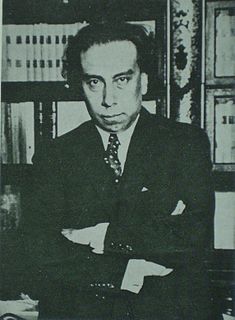
Mario Bravo was an Argentine politician and writer.
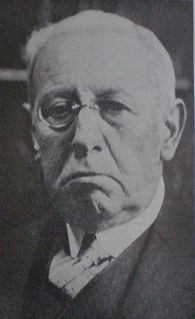
José Nicolás Matienzo (1860–1936) was a prominent Argentine lawyer, writer, academic and policy maker.
Election night was a referendum on the charismatic Yrigoyen, as well as on the largely positive memories voters had of 1916—22 term. Yrigoyen had further built on this sentiment by focusing debate in the closing days of the campaign on the future of YPF, thereby presenting himself as its best defense against the oil concern's chief antagonist, Standard Oil. His ticket swept the polls, recovering the majority it enjoyed in the Lower House in the early 1920s (with 53 of 79 seats at stake), and winning 5 of 10 contested Senate seats. His faction won majorities in all major districts: the City of Buenos Aires, and in Buenos Aires, Córdoba and Santa Fe Provinces (the latter two had been in opposition hands since 1920 and 1918, respectively). Mendoza Province, which remained in the reformist former Governor Carlos Washington Lencinas' Dissident UCR column, continued to be denied its two Senators by the body, itself. [4]
YPF S.A. is a vertically integrated Argentine energy company, engaged in oil and gas exploration and production, and the transportation, refining, and marketing of gas and petroleum products.
Standard Oil Co. Inc. was an American oil producing, transporting, refining, and marketing company and monopoly. Established in 1870 by John D. Rockefeller and Henry Flagler as a corporation in Ohio, it was the largest oil refinery in the world of its time. Its history as one of the world's first and largest multinational corporations ended in 1911, when the U.S. Supreme Court ruled, in a landmark case, that Standard Oil was an illegal monopoly.

Buenos Aires is the largest and most populous Argentinian province. It takes the name from the city of Buenos Aires, which used to be part of the province and the provincial capital until it was federalized in 1880. Since then, in spite of bearing the same name, the province does not include the national capital city proper, though it does include all other localities of the Greater Buenos Aires metropolitan area surrounding it. The current capital of the province is the city of La Plata, founded in 1882.
Bravo's Authentic Socialists lost to Matienzo's splinter ticket (though only an endorsement by San Juan Governor Federico Cantoni gave the latter 3 electoral votes). [3] Roca's Unified Front, which lost in their home province of Córdoba, had endorsed the Antipersonalist UCR Melo-Gallo ticket, and pledged their 20 electors to the latter in a symbolic alliance. Minor and provincial parties, for their part, opted instead to abstain from casting most of their combined 84 electoral votes, thereby creating the largest such deficit in the history of the Argentine Electoral College (abolished in 1994 by the constitutional convention held that year). Yrigoyen's running mate, Francisco Beiró, died before taking office, and Córdoba Governor Enrique Martínez was elected to the post by the electoral college. [5] Yrigoyen was sworn in on October 12, 1928.

An electoral college is a set of electors who are selected to elect a candidate to a particular office. Often these represent different organizations, political parties, or entities, with each organization, political party or entity represented by a particular number of electors or with votes weighted in a particular way. The system can ignore the wishes of a general membership.

Enrique Martínez was an Argentine lawyer and politician, governor of Córdoba Province Argentine Vice President during the second Hipólito Yrigoyen administration.

Entre Ríos is a central province of Argentina, located in the Mesopotamia region. It borders the provinces of Buenos Aires (south), Corrientes (north) and Santa Fe (west), and Uruguay in the east.

Tucumán is the most densely populated, and the second-smallest by land area, of the provinces of Argentina. Located in the northwest of the country, the province has the capital of San Miguel de Tucumán, often shortened to Tucumán. Neighboring provinces are, clockwise from the north: Salta, Santiago del Estero and Catamarca. It is nicknamed El Jardín de la República, as it is a highly productive agricultural area.
| Party/Electoral Alliance | Votes | Percentage | Electoral College |
|---|---|---|---|
| Radical Civic Union (UCR) | 839,140 | 61.7% | 245 |
| Antipersonalist UCR a | 155,371 | 11.4% | 71 |
| Unified Front a | 89,249 | 6.4% | |
| Conservative a | 73,048 | 5.4% | |
| Socialist Party | 65,660 | 4.5% | |
| Unified UCR a (Santa Fe Province) | 47,412 | 3.5% | |
| Independent Socialist Party | 6,001 | 0.4% | 3 |
| Others | 84,468 | 6.2% | |
| Positive votes | 1,360,349 | 93.1% | 319 |
| blank or nullified votes | 101,256 | 6.9% | 57 b |
| Total votes | 1,461,605 | 100.0% | 376 |
a) Parties nominating the Leopoldo Melo-Vicente Gallo ticket.b) Abstentions.
| Party/Electoral Alliance | Seats | Change | % of votes |
|---|---|---|---|
| UCR | 92 | 61.7% | |
| Conservative | 14 | 5.4% | |
| Unified UCR (Santa Fe Province) | 9 | 3.5% | |
| Independent Socialist | 6 | 4.8% | |
| Liberal/Autonomist (Corrientes Province) | 6 | 2.0% | |
| Antipersonalist UCR | 5 | 9.9% | |
| Authentic Socialist (Buenos Aires) | 4 | ~ | |
| Lencinist UCR | 2 | = | 1.5% |
| UCR Bloc (San Juan Province) | 1 | 1.2% | |
| Unified Front | 1 | 6.4% | |
| Others | 18 | 3.6% | |
| Invalid votes | 6.9% | ||
| Total | 158 | 100.0% |
| Party/Electoral Alliance | New Seats | Total |
|---|---|---|
| UCR | 5 | 8 |
| Antipersonalist UCR | 1 | 8 |
| Provincial Union (Salta Province) | 0 | 2 |
| Socialist | 0 | 1 |
| Liberal Party of San Luis | 0 | 2 |
| Liberal Party of Corrientes | 2 | 2 |
| Autonomist Party of Corrientes | 0 | 1 |
| Democratic Party (Córdoba Province) | 0 | 1 |
| Popular Concentration (Santiago del Estero Province) | 0 | 1 |
| Liberal Party of Tucumán | 0 | 1 |
| Seats left vacant | 4 * | |
| Total | 10 | 30 |
(*): Barred by the Senate for political reasons; seats vacant until 1931.

Agustín Pedro Justo Rolón was President of Argentina from February 20, 1932, to February 20, 1938. He was a military officer, diplomat, and politician, and was president during the Infamous Decade.
Amadeo Tomás Sabattini was an Argentine politician. He served as Governor of Córdoba from May 17, 1936, to May 17, 1940.

The Argentine presidential election of 1931 was held on 8 November. With a turnout of 73.4%, it produced the following official results:

The Argentine general election of 1922 was held on 2 April. There was a turnout of 55.2%.
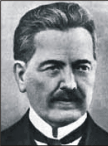
The Argentine general election of 1916 was held on 2 April. Voters elected the President, legislators, and local officials. The first secret-ballot presidential elections in the nation's history, they were mandatory and had a turnout of 62.7%.
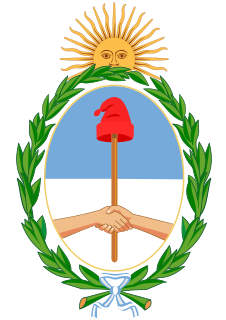
Argentina held nine presidential elections between 1862 and 1910, every six years.

José Tamborini was an Argentine physician and historically significant politician.
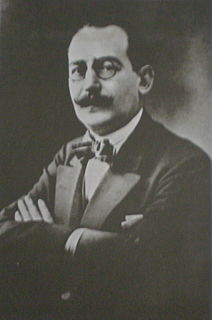
Enrique Mosca was an Argentine lawyer and politician prominent in the centrist Radical Civic Union (UCR).

Argentine legislative elections of 1912 were held on 7 April 1912 for the Argentine Chamber of Deputies. The first free, democratic elections in the nation's history, the contest had a turnout of 68.5% and produced the following official results:

The Argentine presidential election of 1937 was held on 5 September 1937.
The Argentine legislative elections of 1918 were held on 3 March. Voters chose their legislators and numerous governors, and with a turnout of 56.4%, it produced the following results:
The Argentine legislative elections of 1924 were held on 7 March. Voters chose their legislators and numerous governors, and with a turnout of 44.2%, it produced the following results:
The Argentine legislative elections of 1926 were held on 7 March. Voters chose their legislators and numerous governors, and with a turnout of 49.2%, it produced the following results:
The Argentine legislative elections of 1930 were held on 2 March. Voters chose their legislators, with a turnout of 75.1%, which produced the following results:
The Concordancia was a political alliance in Argentina. Three Presidents belonging to the Concordance were in power from 1931 to 1943, a period known in Argentina as the "Infamous Decade."